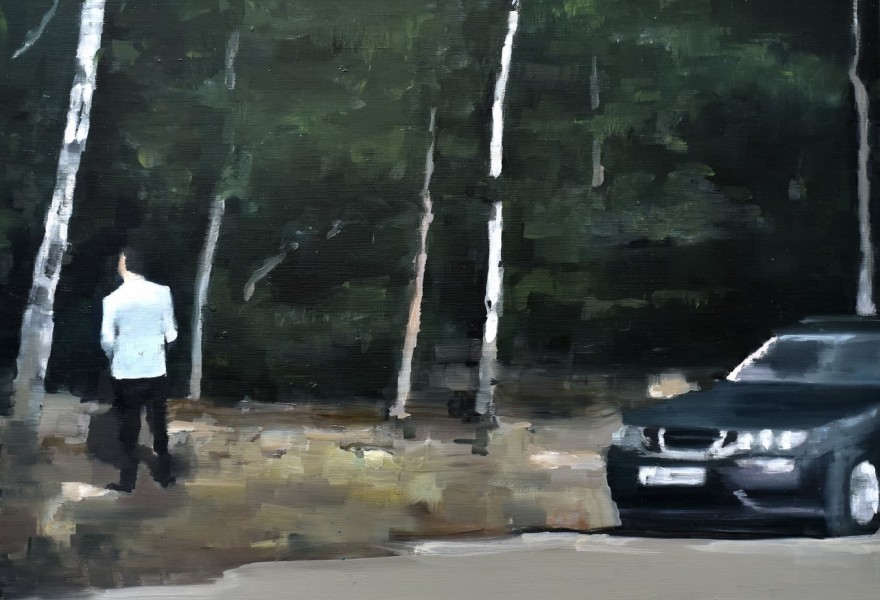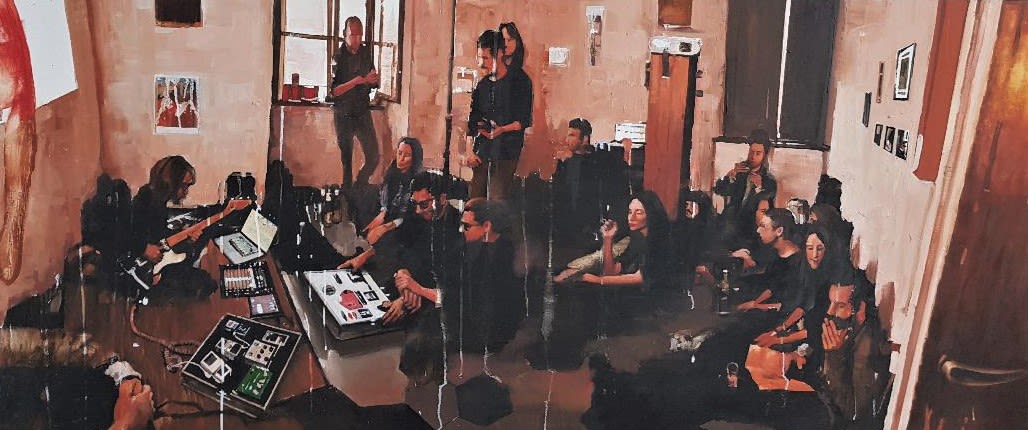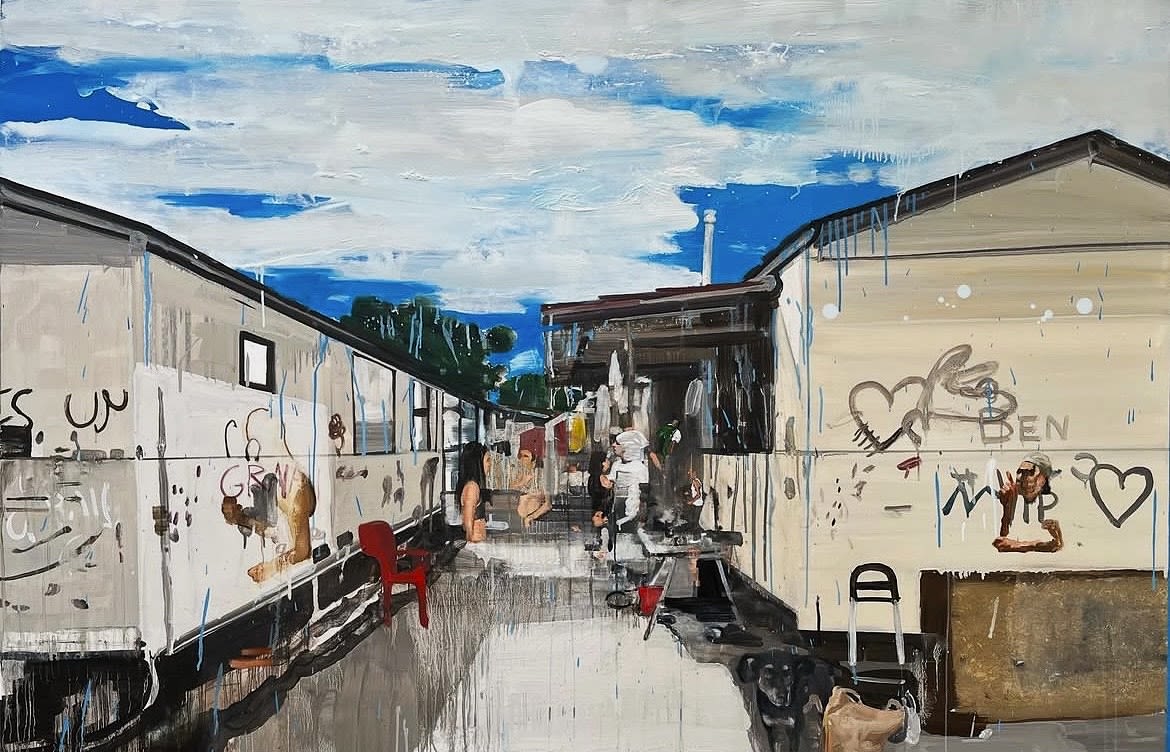20 may 2025, Flor Linckens
Daniele Galliano: the individual in plural
At Livingstone Gallery in The Hague, Italian artist Daniele Galliano offers a glimpse into the way he engages with the world: observant, empathetic and fascinated by human behaviour in all its complexity. His paintings oscillate between figuration and abstraction, not as opposites but as forces that enhance one another. Galliano’s works are marked by narrative fragmentation and a distinct visual poetry. The exhibition will be on view until 14 June 2025.
The show evokes the atmosphere of a melancholic wandering, not only through urban and natural landscapes but also through the deeper layers of human consciousness. Galliano presents figures that are sometimes barely recognisable: faces with features wiped away, bodies that seem to dissolve into their surroundings. In the series "Empty Head", of which two panels are included in the exhibition, the portrayed appear to have lost part of their identity. Their eyes are blank or hollowed out, their gaze elusive. Galliano conveys how individuals in contemporary society can at times become anonymous shells in the public space. His portraits show just how fragile and fleeting identity can be. A face, as a symbol of one’s presence, may disintegrate, even when the person behind it does not. Yet the warm, textured brushwork suggests these figures once were someone — and still are.
One striking aspect of Galliano’s practice is his depiction of groups. Since the 1990s, he has been exploring the dynamics of the crowd. In his work, the collective is never amorphous but composed of individuals, each with their own physical and emotional weight. Not an abstract multitude, but people coming together around a shared experience and, at best, forming part of a greater whole. From raves and religious processions to sports clubs, protests or refugee camps, Galliano consistently questions how people relate to one another and how we can preserve our identity within something larger than ourselves. Yet he also highlights how social structures — religion, politics, economics — seek to exert control over the individual. His paintings can be read as snapshots of a world where people collide, seek each other out, disappear or strive to remain visible.
Alongside these larger scenes, Galliano also focuses on the small and intimate. Two people asleep on the metro. A boxer in a dimly lit gym. A grandfather and grandson outside of their home, one with a cigarette, the other absorbed by his phone — each in their own world, yet quietly together. Another painting shows someone who has pulled over in the woods for a short pause, a scene with cinematic overtones. The man seems to be part of a larger story of which we only glimpse a single frame. These are moments from everyday life, captured in passing yet full of tension. Sometimes the human presence is only implied, as is the case in a painting of a trailer park. Here we only see fragments of people: a torso, two arms and a head, with traces of life in the form of laundry and graffiti. Galliano does not ask the viewer to understand, but to feel — to recognise the presence of others.
Galliano’s paintings are warm, vibrant and rich in colour. Visually and conceptually, he draws inspiration from photography, cinema, comics, literature, music and art history. His works often begin as quick sketches or iPhone photos and are then built up, layer by layer, from a black monochrome ground into a canvas in which the process remains visible.
Daniele Galliano was born in Pinerolo, Italy, in 1961. A self-taught painter, he began his career in the 1990s in Turin, where he still lives and works. His work was quickly recognised and has since been shown internationally, including at the 53rd Venice Biennale, the Ninth Havana Biennale and the third edition of the Kochi-Muziris Biennale in Kerala, India (2016). He has exhibited in New York, Rome and Salzburg, and his work is held in major public and private collections, including GAM in Turin, MART in Trento and Rovereto, Galleria Nazionale d’Arte Moderna in Rome and the Unicredit Private Banking Collection in Milan.




